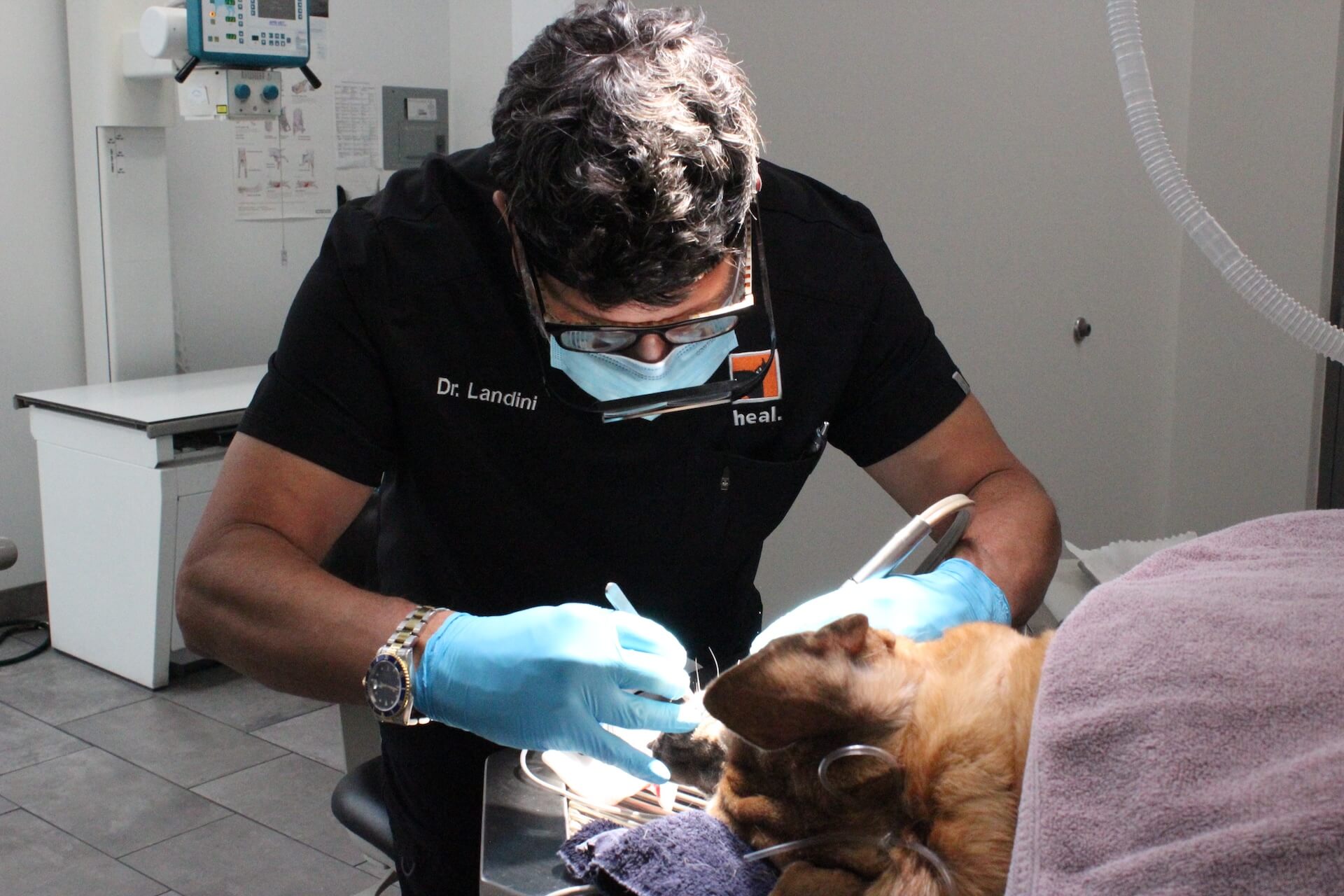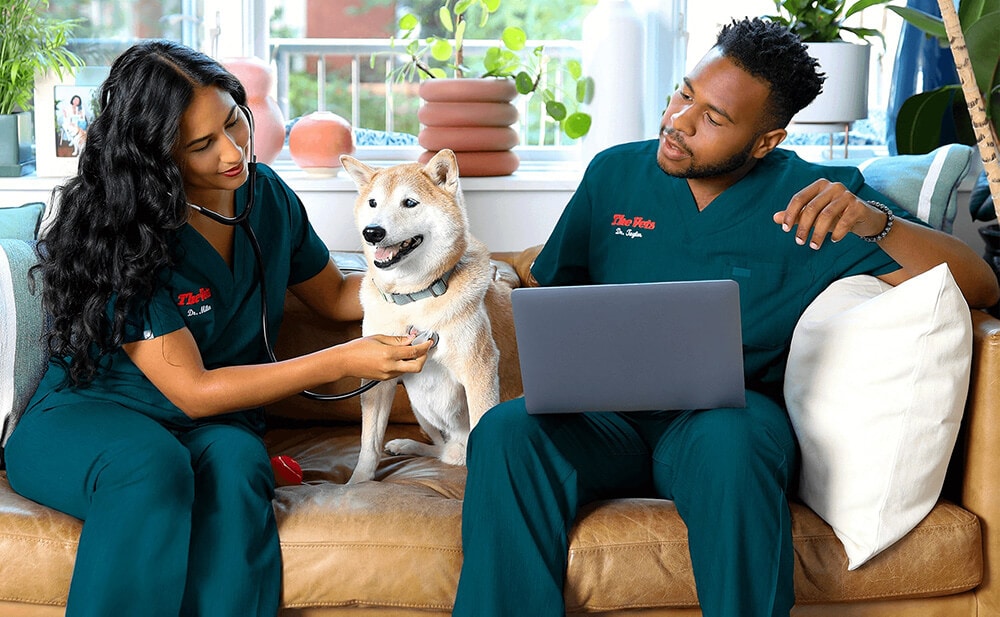A Veterinarian’s Insight Into Long-Term Outcomes of tplo surgery
A Veterinarian’s Insight Into Long-Term Outcomes of tplo surgery
Blog Article
All Concerning Vet Surgical Treatment: Understanding the Importance of Specialist Take Care Of Your Animals
Vet surgical procedure is an essential element of pet dog health care. It encompasses various treatments, from routine elective surgical treatments to immediate interventions. Understanding the intricacies of these surgical treatments can assist pet owners make notified choices. The prep work, implementation, and recuperation phases are necessary for making sure the well-being of animals. With appropriate knowledge, proprietors can browse the complexities of veterinary care. What aspects should be considered prior to an animal goes through surgical treatment?
Kinds Of Veterinarian Surgeries
When a pet calls for medical treatment, comprehending the various sorts of veterinarian surgeries can help pet owners make informed choices. Veterinary surgical procedures can be broadly classified into three main kinds: elective, urgent, and emergency situation surgeries. Optional surgeries, such as spaying or neutering, are prepared procedures that are not instantly lethal. Immediate surgical procedures, like those for foreign body elimination, have to be done soon yet are not life-threatening in the minute. Emergency surgical procedures, such as those resolving serious injury or internal bleeding, are vital and require immediate attention.Additionally, surgeries can differ in complexity, varying from minimally intrusive laparoscopic procedures to much more extensive open surgical treatments. Each type of surgery brings its own dangers and healing processes. Understanding these categories enables animal owners to involve in significant discussions with veterinarians, causing better results for their precious animals.
Planning for Your Pet's Surgical procedure
Planning for an animal's surgical procedure includes an extensive checklist to guarantee all fundamentals are covered. Efficient interaction with the veterinarian is important for recognizing the procedure and any type of essential pre-operative steps - canine tplo surgery. Additionally, having clear post-operative care instructions will certainly aid proprietors provide the most effective support for their recouping family pets
Pre-Surgery List Basics
Assuring a smooth medical experience for a pet dog requires mindful preparation and interest to detail. A pre-surgery list is necessary for family pet owners to follow. Initially, validating the set up surgery day and time is essential. Owners need to additionally confirm that their pet has actually fasted according to the vet's instructions, normally for 8-12 hours before surgical procedure. Collecting necessary clinical documents, including vaccination history, is crucial for the veterinarian's review. It is likewise advisable to prepare a comfy room at home for the animal's healing after surgery. Proprietors should have a plan for transportation to and from the veterinary clinic, making sure that the pet dog is safe and comfortable throughout the journey. Complying with these actions can substantially boost the medical experience.
Connecting With Your Vet

Efficient communication with the vet is essential for an effective surgical experience for pets. Owners ought to be prepared to discuss their pet dog's case history, consisting of any pre-existing conditions, medications, and allergies. This information helps the vet analyze risks and tailor the surgical plan appropriately. Additionally, animal proprietors must ask inquiries pertaining to the treatment, anesthetic, and anticipated end results to assure they fully comprehend the process. Clearing up any kind of questions can reduce anxiety for both the pet dog and the proprietor. It is also essential to communicate any behavioral changes or concerns observed in the animal leading up to the surgery. Inevitably, clear dialogue fosters count on and collaboration, ensuring that family pets obtain the most effective possible care during their surgical journey.
Post-Operative Care Instructions
After talking about the operation with the vet, animal owners should concentrate on post-operative care guidelines to promote a smooth recovery for their family pets. These instructions usually include monitoring the surgical site for indications of infection, such as inflammation or discharge. Pet dogs might require to be maintained tranquil and restricted to stop excessive activity that can interrupt healing. Pain management is vital, so proprietors must follow the vet's assistance on carrying out medicines. Additionally, nutritional limitations may be suggested to prevent stomach distress. Regular follow-up appointments are necessary to guarantee proper healing and deal with any concerns. By adhering to these post-operative treatment guidelines, animal owners can considerably add to their pet's recovery and total well-being.
The Surgery Explained
The surgical process for pets includes crucial steps that ensure their safety and security and recuperation. Pre-surgery prep work are necessary for decreasing threats, while post-operative treatment guidelines play an essential function in advertising healing. Understanding these components helps family pet proprietors browse the medical experience better.
Pre-Surgery Preparations
Prior to a pet undertakes surgical procedure, a number of essential preparations have to take location to ensure a risk-free and successful treatment. First, a detailed vet exam is important to analyze the pet dog's overall health and wellness and recognize any possible risks. This might consist of blood examinations, imaging, or various other diagnostics. The vet will likewise review anesthesia choices customized to the family pet's specific demands. In addition, pet dog owners are usually advised to keep food and water for a specified time before surgical procedure to decrease the threat of issues throughout anesthetic. It's essential for proprietors to supply a full case history, consisting of any kind of medications or allergic reactions, ensuring the medical team has all essential details. Proper communication and adherence to pre-surgery standards can substantially improve the end result of the procedure.
Post-Operative Treatment Standards
Correct post-operative care is essential for ensuring a family pet's recovery adhering to surgical treatment. After the treatment, family pets must be kept track of very closely for any kind of indications of a vets difficulties, such as extreme bleeding, swelling, or uncommon actions. It is essential to adhere to the veterinarian's instructions pertaining to medications, consisting of pain reducers and anti-biotics. Family pets ought to be kept in a quiet, comfortable atmosphere to reduce stress and promote recovery. Restricting activity is vital; short, leashed strolls may be required, but jumping or running should be prevented. Normal follow-up consultations need to be arranged to assess the recovery procedure. In addition, the medical site has to be kept clean and dry, with any signs of infection reported to a veterinarian promptly. Following these guidelines boosts healing end results.
Anesthetic and Discomfort Administration
Effective anesthesia and pain monitoring are important elements of veterinary surgical procedure, making certain that animals remain comfy and risk-free throughout the treatment. Veterinarians evaluate each pet dog's individual needs, thinking about factors such as age, weight, wellness condition, and the kind of surgical treatment being performed.Anesthesia procedures typically include a mix of pre-anesthetic medications, induction agents, and inhalant anesthetics, enabling for accurate control over the animal's degree of awareness. Tracking during surgery is vital; vets constantly observe important signs to attend to any kind of prospective problems promptly.Pain administration approaches may entail opioids, non-steroidal anti-inflammatory medicines (NSAIDs), and anesthetics, customized to the pet's specific scenario. This diverse method aids minimize discomfort and advertises a smoother medical experience. By prioritizing effective anesthetic and pain management, vet experts improve the overall well-being of pets undergoing procedures, guaranteeing they obtain the highest possible requirement of treatment.
Post-Operative Care and Recovery
Adhering to surgical procedure, the emphasis changes to post-operative care and recovery, which is necessary for ensuring an animal's secure go back to normal tasks. Throughout this period, family pets call for a quiet, comfortable environment to aid recovery. Owners must closely check their pet dogs for any kind of indicators of discomfort or uncommon behavior.Veterinary standards frequently include specific guidelines connected to drug administration, injury care, and nutritional adjustments. It is vital to follow these recommendations to decrease issues and advertise healing. Pet dogs may need to be limited from vigorous activities, such as running or leaping, during their recovery period (canine tplo surgery).Regular follow-up consultations with the veterinarian enable for surveillance of the pet's progress and timely adjustments to the treatment plan. Giving emotional support and friendship can additionally enhance a pet dog's healing experience, aiding to relieve tension and anxiety. On the whole, thorough post-operative care plays a significant function in accomplishing a successful recuperation
Identifying Complications After Surgical Treatment
Exactly how can animal Discover More owners determine difficulties after surgical procedure? Understanding of details indicators is vital for ensuring the well-being of family pets during healing. Common indicators consist of too much swelling, redness, or discharge at the medical site, which may symbolize infection. Furthermore, relentless pain, shown by grumbling or reluctance to move, must motivate immediate focus. Modifications in cravings or water intake can likewise suggest difficulties; a decline in these behaviors might indicate discomfort or distress.Moreover, family pet owners should check their family pets for any kind of unusual behavior, such as lethargy or difficulty breathing, as these can be signs of serious issues. Throwing up or diarrhea following surgery may call for immediate vet evaluation. Identifying these complications early can significantly affect an animal's healing process, highlighting the significance of vigilance and prompt communication with a veterinarian for any type of concerning signs and symptoms.
The Duty of Veterinary Specialists in Surgical Treatment
Veterinary experts play a crucial role in making certain the security and success of procedures for pets, particularly adhering to surgical procedure when keeping track of and treatment are extremely important. These experts consist of vets, veterinary technicians, and support staff, all of whom add specialized abilities to the surgical process.Before surgical treatment, veterinarians carry out comprehensive evaluations to assess the pet dog's health, making sure that any underlying problems are taken care of. During the treatment, the surgical team provides anesthesia, maintains sterile atmospheres, and monitors vital signs, all important for reducing risks.Post-operative care is similarly significant; veterinary professionals observe for difficulties, handle pain, and overview proprietors on healing practices. Their proficiency allows them to acknowledge very early signs of distress or infection, making sure prompt intervention. Inevitably, the collaborative initiatives of vet professionals in medical treatment promote a safe environment, advertising the health of pet dogs throughout the medical journey.

Regularly Asked Inquiries
Just how Do I Pick the Right Veterinary Doctor for My Family pet?
Selecting the best veterinary surgeon entails researching credentials, checking out reviews, and reviewing the facility's setting. It is important to mirror on the doctor's experience with details treatments and their communication style when choosing.
What Prevail Misconceptions Regarding Veterinarian Surgeries?
Common false impressions about vet surgical procedures include beliefs that they are constantly risky, unneeded, or just for emergencies. Lots of animal proprietors undervalue the advantages of preventive treatments and the ability involved in veterinary surgical care.
Exactly How Much Will My Pet dog's Surgical procedure Price?
The price of an animal's surgical procedure can differ considerably based on variables such as the type of procedure, the vet's experience, and geographic location (24 hour vet bellingham). top article Normally, expenses vary from a few hundred to a number of thousand dollars

Can My Family Pet Eat Prior To Surgical Procedure?
Prior to surgical treatment, it is typically suggested that pets avoid eating for a certain period. This fasting helps in reducing the risk of issues during anesthesia. Proprietors need to consult their vet for precise directions tailored to their pet's needs.
Suppose My Family Pet Has Pre-Existing Health Issues?
When a pet has pre-existing health and wellness conditions, it's essential for the vet to evaluate these factors prior to surgical treatment. This evaluation guarantees suitable precautions are taken, decreasing risks and enhancing the family pet's total safety throughout the treatment.
Report this page